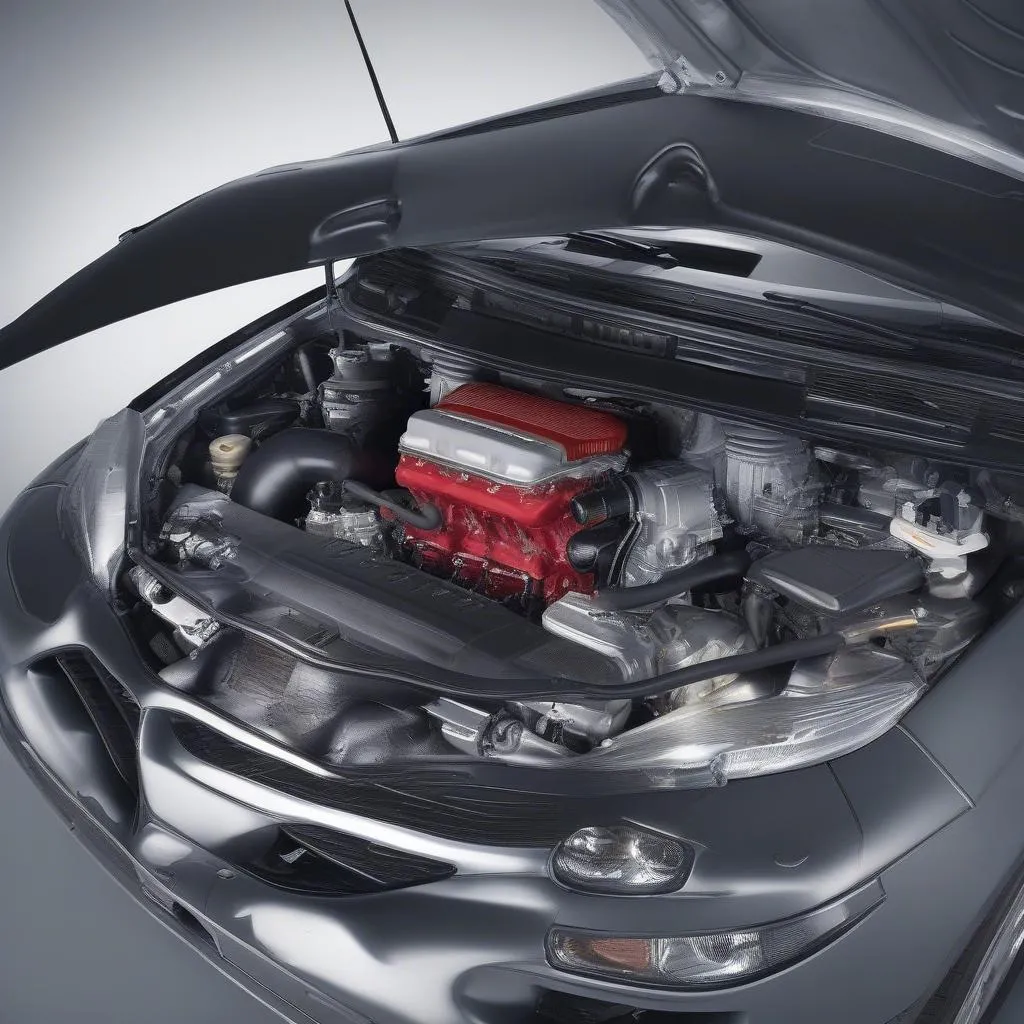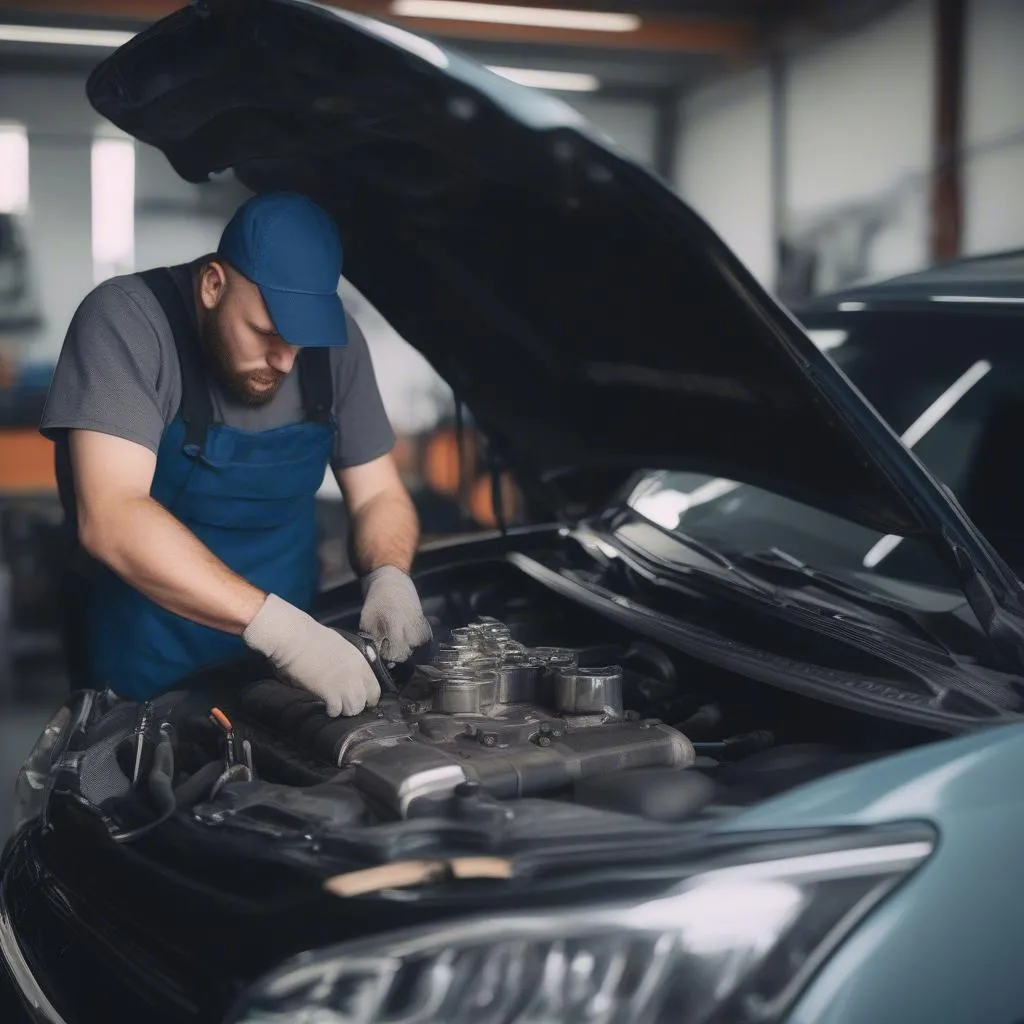“Check engine” light staring you down again? Don’t panic! It could be something as simple (or complex, depending on how you look at it) as OBD code P0128. Let’s say you were cruising down Sunset Boulevard in your sleek Audi A4, California sun warming your face, when bam! The dreaded light pops up. This scenario might sound familiar to some. While it could be a number of things, P0128 often points to a problem in your car’s cooling system, specifically, your engine isn’t reaching optimal operating temperature quickly enough. But what does that really mean, and how do you fix it? Let’s delve into the world of OBD code P0128 and get your car back on track.
What Does P0128 Really Mean?
To understand P0128, imagine your engine as a finely tuned athlete. It performs best at a specific temperature. The cooling system, like a coach, ensures that temperature is maintained. Now, P0128 is like the coach telling you the athlete is warming up too slowly. This could be for several reasons, and just like a good coach, we need to investigate.
From a mechanic’s perspective, Richard Campbell, author of “Automotive Cooling Systems Demystified,” states, “P0128 often signifies a sluggish system, potentially a faulty thermostat or coolant sensor.”
Possible Causes of P0128
- Faulty Thermostat: This little valve regulates coolant flow and can become stuck open, preventing the engine from reaching the right temperature.
- Coolant Sensor Problems: The Engine Coolant Temperature (ECT) sensor tells your car’s computer the engine’s temperature. A faulty sensor can send incorrect readings, triggering the code.
- Low Coolant Level: Insufficient coolant can lead to inefficient heating. This could be due to a leak or simply needing a top-up.
- Cooling System Issues: Other potential culprits include a malfunctioning water pump, radiator issues, or even a clogged coolant passage.
Tackling the P0128 Code
Diagnosing P0128 involves a few steps. A mechanic, or a savvy DIYer, would typically:
- Read the Code: Using an OBD-II scanner, they’ll confirm the P0128 code and check for any other codes that might provide clues.
- Inspect the Coolant: They’ll check the coolant level and look for any signs of leaks or contamination.
- Test the Thermostat and Sensors: Using specialized tools, they’ll test the thermostat’s operation and the accuracy of the ECT sensor.
- Examine the Cooling System: If the thermostat and sensors check out, they’ll inspect the water pump, radiator, and coolant hoses for any issues.
Addressing the Root Cause
Once the culprit is identified, the solution could be as simple as replacing a faulty thermostat or topping up the coolant. However, more complex issues like a damaged radiator or water pump might require professional repair.
Frequently Asked Questions about P0128
Q: Can I still drive my car with a P0128 code?
A: While you might be able to drive short distances, it’s not recommended. Driving with a P0128 code can lead to reduced fuel efficiency and, in worst-case scenarios, engine damage.
Q: How much does it cost to fix a P0128 code?
A: Costs can vary greatly depending on the underlying issue. A simple thermostat replacement might cost a few hundred dollars, while a major cooling system repair could run into thousands.
Q: Can I fix a P0128 code myself?
A: If you’re comfortable with basic car maintenance, you might be able to handle simpler fixes like replacing the thermostat. However, for more complex issues, it’s best to seek professional help.
 Car Engine
Car Engine
Other Related OBD-II Codes
P0128 often goes hand in hand with other codes, such as:
- P0125: Insufficient Coolant Temperature for Closed Loop Fuel Control
- P0116-P0118: Issues with the ECT Sensor Circuit
Need Help with Your Car Troubles?
We’re here to help! If you need assistance with diagnosing or fixing your car’s issues, including anything related to OBD codes or diagnostic tools, don’t hesitate to contact us via WhatsApp at +84767531508. Our team of automotive experts is available 24/7 to provide guidance and support.
 Mechanic Working
Mechanic Working
Keep Your Engine Happy, Keep Driving Safe
Understanding your car’s warning signs is crucial. While a “check engine” light might seem intimidating, often, it’s your car’s way of asking for a little attention. Don’t ignore it! Addressing the problem early, like in the case of OBD code P0128, can save you from headaches and costly repairs down the road. Remember, regular maintenance and timely repairs are key to a happy and healthy car.
Looking for more car repair advice or information on other OBD codes? Check out these related articles:
- [Common OBD-II Codes and What They Mean](link to related article)
- [DIY Car Maintenance Tips](link to related article)